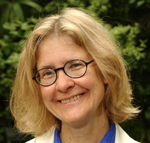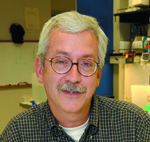Three Washington University School of Medicine professors have been elected fellows of the American Academy of Arts and Sciences.
The new fellows are Susan K. Dutcher, PhD, professor of genetics and of cell biology and physiology; Timothy J. Ley, MD, the Alan and Edith Wolff Professor of Medicine, professor of genetics, director of the Stem Cell Biology Section of the Division of Oncology, and associate director for cancer genomics at the Genome Center; and Robert D. Schreiber, PhD, Alumni Endowed Professor of Pathology and Immunology, professor of molecular microbiology and leader of the Tumor Immunology Program at the Alvin J. Siteman Cancer Center at Barnes-Jewish Hospital and the School of Medicine.
The three are among 229 American men and women elected as fellows by the academy, an organization formed in 1870 to cultivate the arts and sciences and to recognize leadership in scholarship, business, the arts and public affairs.
“Professors Dutcher, Ley and Schreiber join an elite group honored by the American Academy of Arts and Sciences,” says Chancellor Mark S. Wrighton. “Each possesses a creative mind, immense talent and remarkable ingenuity, and each engages in groundbreaking research with the goal of improving human health.
“We are proud of their many accomplishments and the recognition they have brought to Washington University,” Wrighton says.
The academy membership includes more than 250 Nobel laureates and 60 Pulitzer Prize winners. Fellows are selected through a competitive process that recognizes individuals who have made pre-eminent contributions to their disciplines and to society at large.
This year’s new fellows and foreign honorary members will be welcomed during an Oct. 9 induction ceremony at the academy’s headquarters in Cambridge, Mass.
Dutcher, who was interim head of the Department of Genetics for three years, is a prominent geneticist. Her laboratory uses the single-celled green algae Chlamydomonas to learn how information in genes is used to construct cilia. These hairlike extensions are present on almost every cell in the human body, where they act like antennas processing signals essential for development and survival.

Dutcher
Problems in cilia and basal bodies, the structures that anchor cilia to the surfaces of cells, are linked to a variety of disorders, including polycystic kidney disease and genetic disorders that affect the ear, nose, sperm, placement of internal organs, number of fingers and toes and length of the limb bones.
Dutcher’s pioneering studies have identified genes that likely contribute to the creation of cilia and basal bodies in Chlamydomonas. Many of these genes are active in higher organisms, including humans. Inherited defects in basal bodies underlie Bardet-Biedel syndrome, which causes blinding retinal dystrophy, obesity and kidney disease.
Dutcher and her colleagues now are investigating the role of ciliary motility in childhood ear infections. Additionally, based on her lab’s discovery that proteins involved in cilia assembly are integral to the cell cycle, she will evaluate the role of cilia in cancer.

Ley is highly regarded for his research to understand the mutations that cause acute myeloid leukemia (AML), a cancer of the blood and bone marrow. He has developed several mouse models of AML and characterized a key pathway by which immune cells kill tumor cells and virus-infected cells.
Schreiber is internationally renowned for his studies of how the immune system and cancers interact. He was the first to show that an immune system protein, interferon gamma, activates immune cells called macrophages, making it possible for them to attack microbial invaders and tumor cells.
His lab worked out many of the key aspects of this activation process, including detailing the structure of the interferon gamma receptor on macrophages and identifying the signaling proteins activated by the receptor.

Schreiber
Schreiber and his colleagues also have proposed and won wide acceptance for a new theory of immune cell and cancer cell interaction called cancer immunoediting.
The theory asserts that there are three possible outcomes from an encounter between immune cells and tumor cells: the tumor can escape the immune cells, likely becoming more malignant in the process; the immune cells can eradicate the tumor; or the tumor and the immune cells can establish an equilibrium that keeps the size of the tumor static but does not kill it.
The first experimental evidence for tumor eradication and tumor equilibrium was produced in the labs of Schreiber and his colleagues. Their work may help guide a new generation of improved immunotherapy for cancer.
Washington University School of Medicine’s 2,100 employed and volunteer faculty physicians also are the medical staff of Barnes-Jewish and St. Louis Children’s hospitals. The School of Medicine is one of the leading medical research, teaching and patient care institutions in the nation, currently ranked fourth in the nation by U.S. News & World Report. Through its affiliations with Barnes-Jewish and St. Louis Children’s hospitals, the School of Medicine is linked to BJC HealthCare.